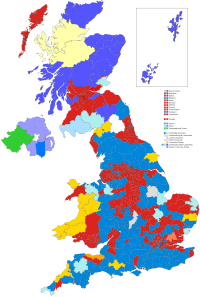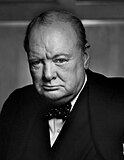| |||||||||||||||||||||||||||||||||||||||||||||||||||||||||||||||||||||||||||||
All 640 seats in the House of Commons 321 seats needed for a majority | |||||||||||||||||||||||||||||||||||||||||||||||||||||||||||||||||||||||||||||
|---|---|---|---|---|---|---|---|---|---|---|---|---|---|---|---|---|---|---|---|---|---|---|---|---|---|---|---|---|---|---|---|---|---|---|---|---|---|---|---|---|---|---|---|---|---|---|---|---|---|---|---|---|---|---|---|---|---|---|---|---|---|---|---|---|---|---|---|---|---|---|---|---|---|---|---|---|---|
| Opinion polls | |||||||||||||||||||||||||||||||||||||||||||||||||||||||||||||||||||||||||||||
| Turnout | 72.8% ( | ||||||||||||||||||||||||||||||||||||||||||||||||||||||||||||||||||||||||||||
| |||||||||||||||||||||||||||||||||||||||||||||||||||||||||||||||||||||||||||||
 Colours denote the winning party – as shown in § Results | |||||||||||||||||||||||||||||||||||||||||||||||||||||||||||||||||||||||||||||
 Composition of the House of Commons after the election | |||||||||||||||||||||||||||||||||||||||||||||||||||||||||||||||||||||||||||||
| |||||||||||||||||||||||||||||||||||||||||||||||||||||||||||||||||||||||||||||
The 1945 United Kingdom general election was a national election held on Thursday 5 July 1945, but polling in some constituencies was delayed by some days, and the counting of votes was delayed until 26 July to provide time for overseas votes to be brought to Britain. The governing Conservative Party sought to maintain its position in Parliament but faced challenges from public opinion about the future of the United Kingdom in the post-war period. Prime Minister Winston Churchill proposed to call for a general election in Parliament, which passed with a majority vote less than two months after the conclusion of the Second World War in Europe.[1]
The election's campaigning was focused on leadership of the country and its postwar future. Churchill sought to use his wartime popularity as part of his campaign to keep the Conservatives in power after a wartime coalition had been in place since 1940 with the other political parties, but he faced questions from public opinion surrounding the Conservatives' actions in the 1930s and his ability to handle domestic issues unrelated to warfare. Clement Attlee, leader of the Labour Party, had been Deputy Prime Minister in the wartime coalition in 1940–1945 and was seen as a more competent leader by voters, particularly those who feared a return to the levels of unemployment in the 1930s and sought a strong figurehead in British politics to lead the postwar rebuilding of the country. Opinion polls when the election was called showed strong approval ratings for Churchill, but Labour had gradually gained support for months before the war's conclusion.
The final result of the election showed Labour to have won a landslide victory,[2] making a net gain of 239 seats, winning 49.7% of the popular vote and achieving a majority of 146 seats, thus allowing Attlee to be appointed prime minister. This election marked the first time that the Labour Party had won an outright majority in Parliament, and allowed Attlee to begin implementing the party's post-war reforms for the country.[3] For the Conservatives, the Labour victory was a shock,[4] as they suffered a net loss of 189 seats although they won 36.2% of the vote and had campaigned on the mistaken belief that Churchill would win as people praised his progression of the war. Of the other two major parties, the Liberal Party faced a serious blow after taking a net loss of nine seats with a vote share of 9.0%, many within urban areas and including the seat held by its leader, Archibald Sinclair. The Liberal National Party fared significantly worse, enduring a net loss of 22 seats with a vote share of 2.9%, with its leader Ernest Brown losing his seat. 324 MPs were elected for the first time which remained the record turnover until 2024.[5]
The 10.7% swing from the Conservatives to an opposition party is the largest since the Acts of Union 1800; the Conservative loss of the vote exceeded that of the 1906 Liberal landslide ousting of a Conservative administration. It was also the first election since 1906 in which the Conservatives did not win the popular vote. Churchill remained actively involved in politics and returned as prime minister after leading his party into the 1951 general election. For the Liberal National Party the election was their last as a distinct party, as they merged with the Conservatives in 1947 while Ernest Brown resigned from politics in the aftermath of the election.
Cite error: There are <ref group=note> tags on this page, but the references will not show without a {{reflist|group=note}} template (see the help page).
- ^ McCallum, R.B.; Readman, Alison (1964). The British General Election of 1945. Nuffield Studies.
- ^ Rowe 2004, p. 37.
- ^ Lynch 2008, p. 4.
- ^ "1945: Churchill loses general election". BBC News. 26 July 1945. Retrieved 22 February 2009.
- ^ Courea, Eleni (9 July 2024). "Record 335 new MPs to be inducted into House of Commons this week". The Guardian. Retrieved 9 July 2024.



